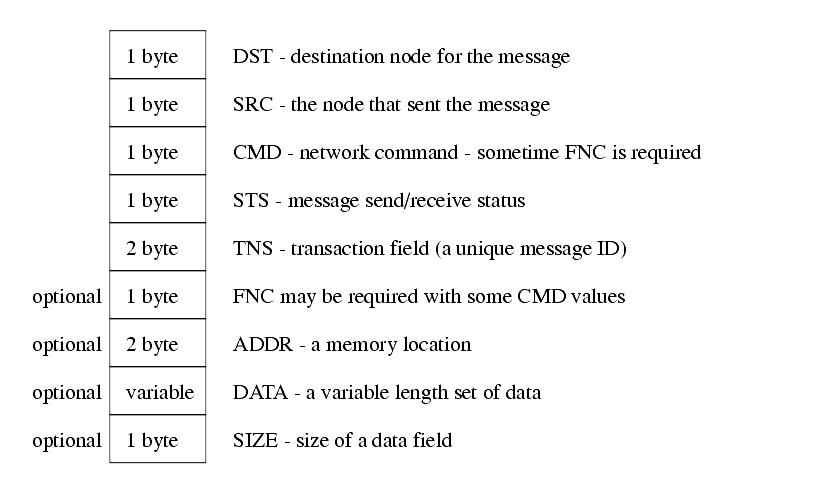31.7 BUS TYPES
������������31.7.1 Devicenet
������������Devicenet is meant as a noise resistant, robust, shop floor network.
The main change that the user will notice is that a rack of a PLC can be broken up and CPU, I/O, etc. are now connected by Devicenet.
Devicenet is an open standard, so components can come from a variety of suppliers.
Based on the CANbus (Controller Area Network) protocol.
Devicenet is a layer 7 - application protocol (Note that CANbus is level 2)
A typical structure for Devicenet is shown below,

There are two types of wire used,

Power supplies are directly connected to the cable to supply power.
The wiring can come in a form of end/connectors,
Devices may have a red/green status light for the network status.
Devicenet used the CANbus indentifier to specify,
On a PLC-5 rack you would need a devicenet interface and could use the instructions below.

On a Softlogix PLC the I/O will be copied into blocks of integer memory. These blocks are selected by the user in the setup of the software. Here the inputs are copied into N9 integer memory, and the outputs are set by copying the N10 block of memory back to the outputs.

31.7.2 CANbus
������������The CANbus (Controller Area Network) uses bit wise resolution for collisions on the network (i.e., the lower the network identifier, the higher the priority for sending)
A data frame for the CANbus is shown below,

Each device listens to the frame it sent to ensure proper communication.
31.7.3 Controlnet
������������This is intended for communication between controllers, and permits more complex messages than Devicenet.
31.7.4 Profibus
������������A control network that is popular overseas, and primarily pushed by Siemens.
31.7.5 Ethernet
������������31.7.6 Proprietary Networks
������������31.7.6.1 - Data Highway
������������Major features of the DH+ network,
The basic data frame looks like,

The data packet looks like that shown below (but it will vary depending upon the requested command).

Some command examples include,

Example for the Allen-Bradley PLC-5 Data Highway Network Connection

31.7.7 Other Network Types
������������PROFIBUS (Professional Field Bus) is an emerging standard for PLC communication that Siemens has incorporated into its product line with the "SINEC L2" bus. Companies such as Festo have agreed to follow the bus standard.